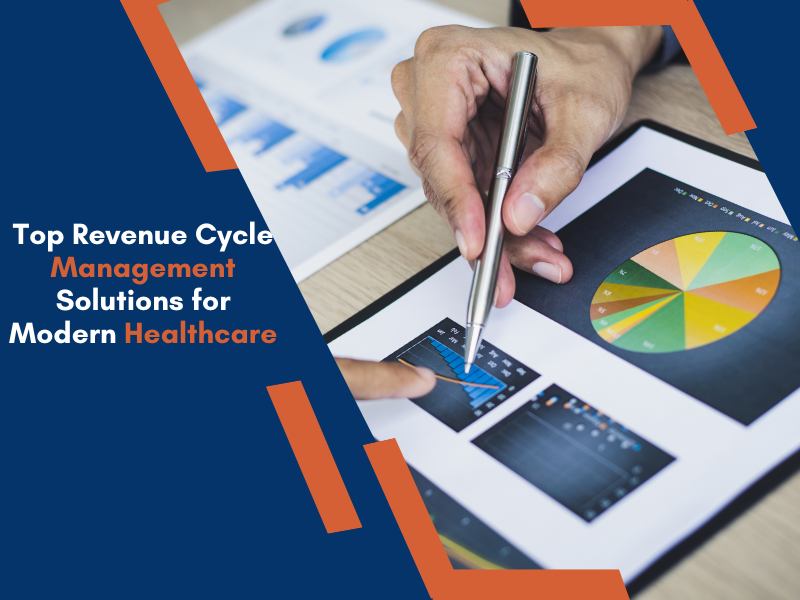Revenue Cycle Management (RCM) is a critical component of healthcare operations, directly impacting the financial health of healthcare organizations. In an industry with complex billing processes, multiple payers, and strict regulatory requirements, RCM serves as the backbone for optimizing revenue and ensuring financial stability. By managing the revenue cycle effectively, healthcare providers can improve cash flow, reduce claim denials, and maximize revenue potential.
In this blog, we’ll explore the role of RCM in healthcare, how it optimizes revenue, and why investing in a strong RCM strategy is essential for every healthcare organization.
Understanding Revenue Cycle Management (RCM) in Healthcare
Revenue Cycle Management (RCM) is the financial process used by healthcare providers to track patient care from appointment scheduling to final payment. RCM encompasses every step involved in collecting revenue for services rendered, including patient registration, insurance verification, coding, billing, claims processing, and payment collections.
A successful RCM process ensures that healthcare organizations get paid accurately and on time for the care they provide, reducing financial strain and enabling investment in quality patient care. The primary goal of RCM is to optimize revenue by improving the efficiency of billing and collections processes while minimizing errors, delays, and denials.
Key Components of RCM
Patient Registration and Eligibility Verification: Accurate patient information and eligibility verification ensure that services are billed correctly and prevent claim rejections due to incorrect data.
Medical Coding and Documentation: Proper coding of diagnoses, procedures, and treatments is essential for accurate billing. Errors in coding can lead to claim denials or delayed payments.
Claims Submission and Processing: Claims need to be submitted promptly to insurers, and each must meet the specific requirements of each payer.
Denial Management: Proactively managing and appealing denied claims is critical for optimizing revenue and reducing potential revenue loss.
Payment Posting and Collections: Properly posting payments and managing outstanding balances help to ensure that all revenue is collected accurately and efficiently.
Patient Billing and Collections: With patients now responsible for a larger portion of healthcare costs, managing patient billing and collections has become a critical aspect of RCM.
Analytics and Reporting: Monitoring RCM performance metrics provides insights into financial health, identifies trends, and highlights areas for improvement.
How RCM Optimizes Healthcare Revenue
RCM plays a central role in optimizing healthcare revenue by addressing every step in the billing and payment process, from patient registration to final payment. Here are some ways RCM enhances revenue generation:
1. Improved Cash Flow through Timely Billing and Collections
A well-structured RCM process reduces delays in billing and ensures claims are submitted promptly. By minimizing the time it takes to process and submit claims, healthcare providers can accelerate reimbursements, leading to better cash flow and a more stable financial position.
2. Enhanced Accuracy Reduces Claim Denials
RCM teams are trained to verify information and ensure claims are accurate before submission. Accurate claims reduce the likelihood of denials, which can slow down payments and result in lost revenue if not managed effectively. An effective RCM system identifies and addresses common causes of claim denials, such as coding errors or missing information, ensuring smoother processing and fewer rejections.
3. Efficient Denial Management and Recovery
In any healthcare organization, claim denials are inevitable. However, a proactive denial management strategy within RCM can recover significant revenue. By identifying the root causes of denials and implementing corrective actions, RCM teams can resubmit and successfully recover payments that would otherwise be lost. Denial management also provides insights into recurring issues, allowing healthcare providers to refine processes and reduce future denials.
4. Patient Financial Responsibility and Collections
As more patients bear higher out-of-pocket costs, effectively managing patient billing and collections is crucial for maximizing revenue. RCM helps healthcare providers communicate financial responsibilities clearly, set up payment plans, and send timely reminders to encourage on-time payments. By optimizing patient collections, healthcare organizations reduce the likelihood of unpaid balances and enhance their revenue stream.
5. Regulatory Compliance and Reduced Risk
The healthcare industry is heavily regulated, with strict compliance standards for billing, coding, and data privacy. RCM professionals stay current with regulations, reducing the risk of compliance issues that can lead to audits, fines, or penalties. By ensuring compliance, RCM protects healthcare organizations from financial risks and safeguards revenue.
6. Better Financial Analytics for Informed Decision-Making
One of the critical roles of RCM is to provide insights into financial performance. By tracking key metrics, such as Days in Accounts Receivable (DAR), net collection rate, and denial rate, RCM enables healthcare organizations to make informed decisions about their revenue cycle. These insights allow organizations to identify areas for improvement, optimize resources, and develop strategies for maximizing revenue.
Key Metrics in RCM for Revenue Optimization
To measure and optimize revenue, RCM professionals rely on specific metrics that reflect the financial health of the organization. Monitoring these key performance indicators (KPIs) can provide actionable insights:
Days in Accounts Receivable (DAR): This metric measures the average number of days it takes to collect payments. A lower DAR indicates a more efficient revenue cycle.
Net Collection Rate: This rate represents the percentage of total collectible revenue received. A high net collection rate reflects effective billing and collections processes.
Denial Rate: The denial rate measures the percentage of claims denied by payers. A lower denial rate indicates fewer errors and more efficient RCM processes.
First Pass Resolution Rate (FPRR): FPRR measures the percentage of claims paid after the first submission. A high FPRR indicates an efficient claims submission process with minimal errors.
Patient Collection Rate: This metric measures the percentage of patient balances successfully collected, reflecting the effectiveness of patient billing and collection efforts.
How Technology Enhances RCM and Revenue Optimization
Technology plays a crucial role in modernizing RCM, enabling healthcare providers to streamline workflows, automate repetitive tasks, and improve data accuracy. Here’s how technology can enhance RCM:
Billing and Coding Software: Automated billing and coding tools reduce errors, ensure accurate claims, and accelerate the submission process.
Eligibility Verification Systems: Real-time eligibility verification tools confirm insurance coverage before services are provided, reducing the risk of denials.
Analytics and Reporting Tools: Advanced reporting tools help RCM teams track performance, identify trends, and make data-driven decisions to optimize revenue.
Patient Portals for Billing: Patient portals with payment capabilities make it easy for patients to view statements, pay balances, and set up payment plans.
Automated Reminders: Automated reminders for patients help reduce overdue balances, improving patient collections and cash flow.
Challenges in RCM and How to Overcome Them
While RCM is essential for optimizing revenue, it is not without challenges. Some common issues include:
Complex Insurance Processes: Dealing with multiple payers, each with its unique requirements, can complicate RCM. Implementing a streamlined RCM workflow and leveraging software solutions can help manage these complexities.
High Patient Responsibility: As patients are responsible for a greater portion of healthcare costs, providers may face challenges in collecting payments. Clear communication, flexible payment options, and automated reminders can improve patient collections.
Regulatory Changes: The healthcare industry’s regulatory environment is continuously evolving, which can impact RCM processes. RCM teams need ongoing training and access to the latest information on coding, billing, and compliance standards to stay compliant and avoid revenue disruptions.
Resource and Staffing Constraints: Managing an efficient RCM process requires skilled professionals. Many healthcare organizations outsource RCM to third-party vendors to access expertise and improve efficiency.
The Future of RCM in Healthcare
The future of RCM in healthcare lies in automation, data-driven insights, and patient-centered approaches. With advancements in AI, machine learning, and predictive analytics, RCM processes will become increasingly streamlined, enabling providers to focus on patient care. Future RCM systems will likely include greater interoperability, connecting seamlessly with electronic health records (EHRs) and insurance databases to enable faster, more accurate billing.
As healthcare continues to embrace value-based care models, RCM will play a critical role in aligning financial incentives with quality care, further emphasizing the importance of an efficient revenue cycle.
Conclusion
Revenue Cycle Management is a fundamental element of optimizing healthcare revenue, enhancing cash flow, reducing claim denials, and ensuring compliance with regulatory standards. An efficient RCM process streamlines every aspect of billing and collections, directly impacting the financial health of healthcare organizations. By investing in technology, tracking key metrics, and leveraging a strong RCM strategy, healthcare providers can optimize revenue and maintain financial stability.
For healthcare providers aiming to improve revenue cycle efficiency and ensure sustainable growth, a well-managed RCM system is not just a financial necessity but a strategic advantage in today’s healthcare landscape





